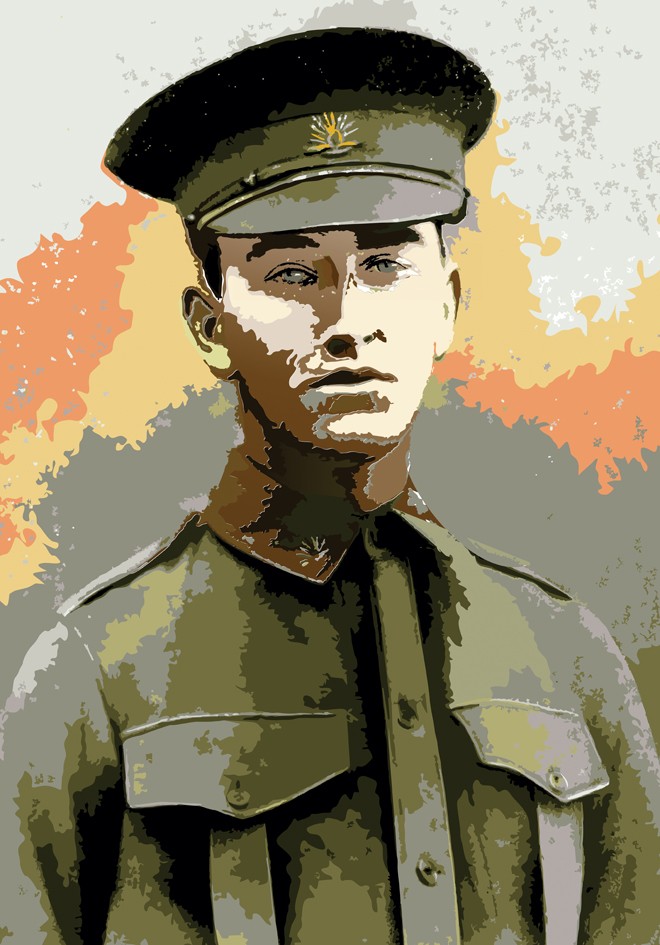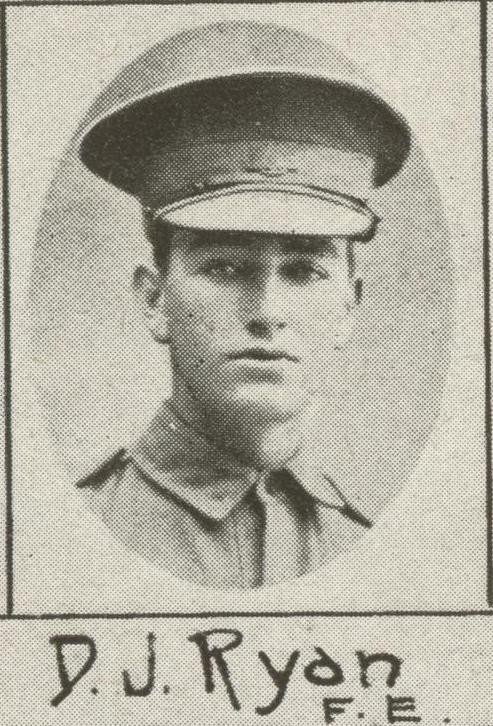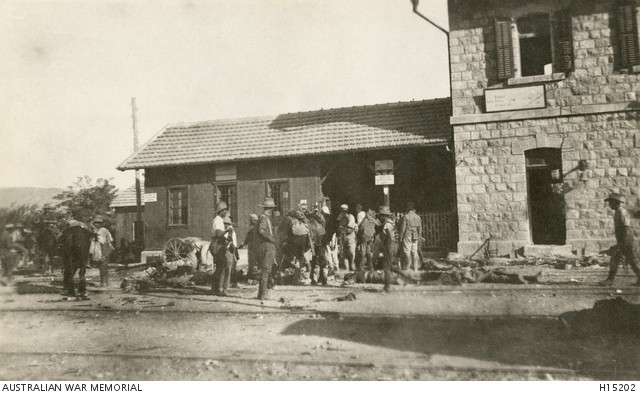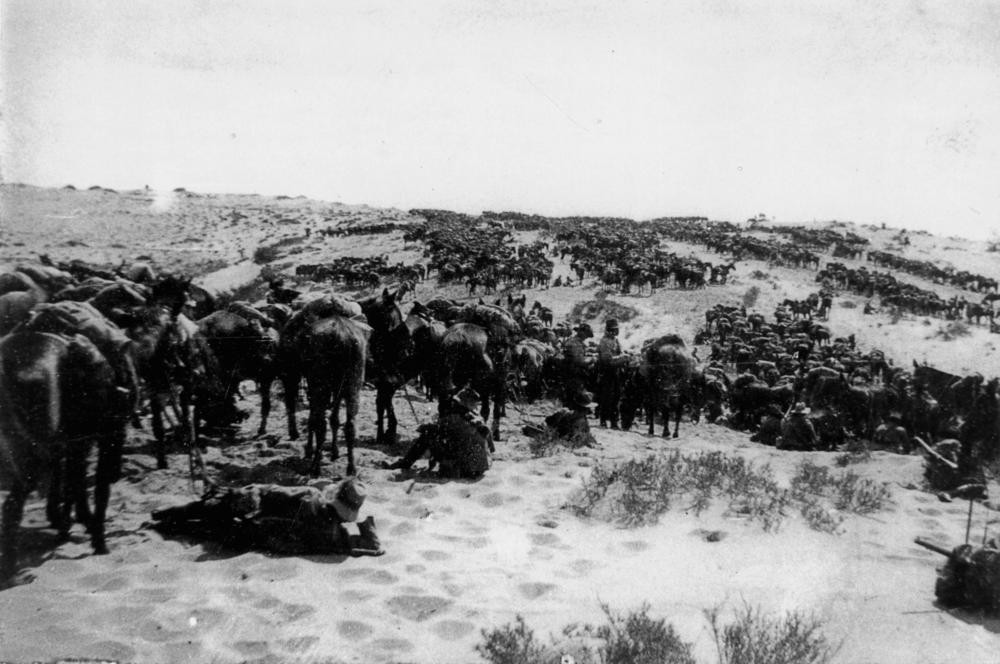Trooper (Sigs.) Dallas Ryan: 11th Light Horse Regiment
By JOL Admin | 19 October 2015
Guest blogger: Lockyer Valley Regional Council.
Displayed in the 'Walk of Fame' inside the Lockyer Valley Cultural Centre, Gatton, are ten photographic portraits of Lockyer Valley locals who fought in the First World War. The portraits formed a component of the recent Queensland Government-sponsored exhibition 'Queensland Transport Museum Salutes 100 Years of ANZAC', which was on display in the adjacent Queensland Transport Museum from 11 April to 30 June 2015, and featured First World War motorised and horse drawn machinery.
This post is the first in a series which will feature the ten Lockyer locals whose portraits and biographies are in the 'Walk of Fame'. Where possible, we will supplement their stories with some images from the State Library of Queensland or Australian War Memorial collections. We acknowledge the Lockyer Valley Regional Council, Derek Barry and Russell Tattam for allowing us to share their content, which can also be found on the Lockyer Valley Libraries catalogue and Flickr.
Dallas “Dal” John Ryan was born on December 26, 1896 at Ballina. The son of a saddler, he was raised at Alstonville, in northern NSW and later learned telegraphy at the Ballina Post Office. Before enlistment he worked on the Grafton to Newcastle Railway. On April 24, 1917, Dallas enlisted at Brisbane (service number 19276) and was drafted into the Signallers unit. Embarking at Sydney on the Kyarra on September 3, 1917, he arrived at the Reinforcements camp at Moascar on October 19. On October 22 he was sent to Zeitoun to Signals Training Unit where he was taught to operate the heliograph, telegraph, buzzer, vibrator, flag and morse. Completing the course on December 9, 1917, Signaller Ryan was attached to the 11th Light Horse Regiment.
The 4th, 11th and 12th Light Horse Regiments made up the 4th Light Horse Brigade and up to the end of war, Dal saw service in all three regiments. Dal recalled a time when the brigade was riding through the desert and came to an oasis with a large grove of orange trees. On entering the grove they found an entire German Military Band hiding within. While the horsemen rested and slaked their thirst with fresh oranges, the band was made to play for the day.
Dal’s most memorable experience was the charge at Semakh. In early August 1918, the 4th Brigade was issued with swords and given special training as a cavalry brigade. Semakh was a strongly defended railway town near the southern shores of Galilee. In the early hours of September 22, 1918 the 11th Regiment drew swords, charged down the fortified town and captured it by 5.30am. Casualties in the charge included three officers and 12 other ranks killed, 28 wounded, 61 horses killed and 39 wounded. The Turks lost 100 killed with 25 officers and 341 other ranks captured. Dal Ryan was in “A” squadron in the charge and received a bullet through his hat. Semakh was the only true cavalry charge of regimental proportion conducted by the Australian Light Horse. It was also the last engagement for the 11th Light Horse regiment in the war. There is a mention of Signaller Ryan in a scene depicting the charge at the Canberra War Memorial.
After the war, Dal was called on to help quell the Egyptian riots of 1919 despite bouts of malaria and dysentery. Spending time in various hospitals, Dal was finally given clearance to go home. On July 17, 1919 he embarked on HT Dunluce Castle at Suez, arriving in Sydney on September 30, 1919. He was discharged from the forces on December 24 1919, two days before his 23rd birthday. After the war, Dal returned to the NSW northern rivers and worked in the timber industry, cutting and hauling cedar logs to the mill. In the cane cutting season, he cut cane around the district.
Prior to moving to Brisbane he spent time in Sydney working racehorses. On October 31, 1938 he married Anne Pattison in Brisbane. They had four sons and two daughters and Dal resumed his old job on the railway. In 1941 the family moved to Laidley where he worked as a Signals Maintenance Officer. In later years Dal campaigned for a swimming pool in Laidley, which now bears his name. He was the first manager for some years and he coached and ran the local swimming club. Dallas Ryan was the last surviving member of the 11th Light Horse Regiment and one of last surviving Australian veterans of the First World War. He died on September 6, 1995, aged 98. He is buried in the Laidley Cemetery.
Comments
Your email address will not be published.
We welcome relevant, respectful comments.



